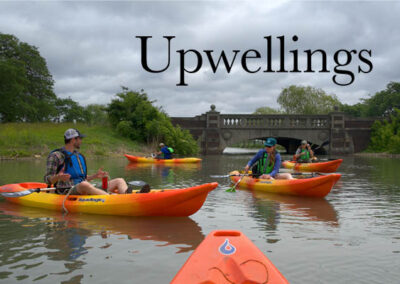Part 2: Not every organism that is introduced is an equal risk for becoming invasive.
By Rochelle Sturtevant, Michigan Sea Grant, Michigan State University Extension; and El Lower, Cooperative Institute for Great Lakes Research (CIGLR)

Framework overlay of scientific and management terminology describing stages of invasion from Kocovsky et al 2018.
National Invasive Species Awareness Week is Feb. 25-March 3, 2019. The goal is to draw attention to invasive species and what individuals can do to stop the spread and introduction of them. This effort is sponsored by a diverse set of partners from across the country. To increase awareness of the issues, Michigan State University Extension and Michigan Sea Grant are publishing articles featuring resources and programs in our state working on invasive species issues.
It is perhaps too easy to think of invasive species in absolute terms – as though a species is either an invader or completely benign (regardless of what we know about it for sure). However, the invasion process is not instantaneous – a species doesn’t suddenly escalate from being extremely rare to being everywhere and dangerous overnight.
Scientists describe a progression of invasion stages using terms like ‘introduced,’ ‘reproducing,’ ‘established,’ ‘dispersal,’ ‘widespread,’ ‘invasive,’ and ‘naturalized,’ while managers associate appropriate management actions such as ‘risk assessment,’ ‘monitoring,’ ‘rapid response,’ ‘eradication,’ ‘control,’ and ‘mitigation’ with similar-sounding stages. Many of these terms are far less well defined than ‘invasive’ itself, and to the best of our knowledge, none have true legal definitions.
When groups use any of these terms in slightly different ways, the result can be confusion, or worse, unintended consequences. For example, if one scientist uses the term ‘established’ to mean “a population that is reproducing at a sufficient level that the population could be self-sustaining”, and a policy-maker interprets that as “the species is established, which means it’s here to stay and therefore eradication is a lost cause,” the result can be that no funds are made available to manage a population that really could have been controlled before it spread any farther.
Introduction is arguably the first step of the biological invasion process. However, not every organism that is introduced is an equal risk for becoming invasive. Many die in the stress of transport and introduction, while others can’t find food or other essential resources in those first critical days. Some fall to local predators (or to herbivores, in the case of plant invaders). Others fail to handle the weather, especially their first Great Lakes winter. Some few survive for a time, but can’t find a mate or suitable habitat in which to reproduce, while others may be able to reproduce, but never expand beyond a small local area or remain relatively rare. All of these biological factors are taken into account when conducting a risk assessment to determine how likely a particular species is to become invasive.
Does ‘established’ mean permanent?
Within discussions of invasive species, many people seem to equate the concepts of established and permanent – creating a perception that once a species is ‘established,’ we have no realistic option other than to give up. In the global sense, no population can really be considered permanent – even dominant native species sometimes go extinct (for instance, passenger pigeons once darkened the skies of the Midwest in huge flocks, but are now extinct). More practically, understanding how a particular researcher defines ‘established’ is important to consider before making that leap. Many researchers define ‘established’ based solely on evidence that the species is present multiple years, others require some evidence of reproduction (such as producing viable seeds), and a handful take the longer view and require that individuals born in the lakes are themselves capable of reproducing (multigenerational). The former is much less likely to be permanent than the latter. Geographic scope matters too: when using any of the above definitions, a species might be established in one bay, but not established everywhere across the Great Lakes. Species that are only established in a small, confined area are far less likely to be ‘permanent’ than ones that are widespread. The location in which a species is found and the tools that are available to manage the species in that location also matters: herbicides may be available to control some plant species if they are found in a small bay, but there are currently no tools available to control a copepod in the open water of the central basin of Lake Erie.
Understanding the species – its vulnerabilities and the specific population, the particular environment, and the tools available — are all necessary to make the best possible decisions about whether and how to control a particular nonindigenous species.


